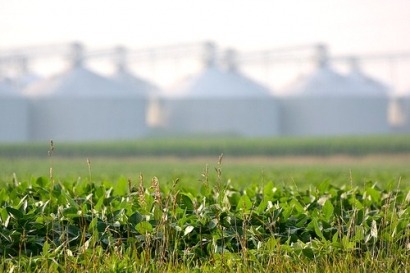
On 15 September, a few days after Reuters leaked details of the European Commission’s decision not to include indirect land use change when calculating greenhouse gas emissions from biofuels, the Scientific Committee of the European Environment Agency issued a statement warning that assumptions biomass combustion is inherently carbon neutral are not correct and result in a worrying form of double-accounting. While the committee’s findings refer to biogas and solid biofuels (pellets and chips), most of the criticisms focus on bioethanol and biodiesel.
The Scientific Committee’s concerns surround energy crops, as it considers that the degree of likely accounting error in the calculations for forest waste, crop and organic waste from landfills, and even high-yielding energy crops on unused invasive grasslands is low. In all others instances, the committee understands that the assumption that the combustion of biofuels (liquid and solid) would be inherently carbon neutral because it only releases carbon taken from the atmosphere during plant growth “is not correct and could even result in increased carbon emissions – thereby accelerating global warming”.
Review needed
According to the EEA, the computations defending the carbon neutrality of biomass combustion ignore the fact that using land to produce plants for energy typically means that this land is not producing plants for other purposes, and do not properly evaluate the impact of cultivating new land. It therefore warns of the inherent danger of indirect land use change and of continuing to include the bioenergy accounting error that assumes that all burning of biomass would not add carbon to the air, since “several reports have suggested that bioenergy could or should provide 20% to 50% of the world’s energy needs in coming decades”.
Consequently, the Scientific Committee concludes that “European Union regulations and policy targets should be revised to encourage bioenergy use only from additional biomass that reduces greenhouse gas emissions, without displacing other ecosystems services such as the provision of food and the production of fibre”.
It adds that “accounting standards for GHGs should fully reflect all changes in the amount of carbon stored by ecosystems and in the uptake and loss of carbon from them that result from the production and use of bioenergy” and that “bioenergy policies should encourage energy production from biomass by-products, wastes and residues (except if those are needed to sustain soil fertility)”.
Soy-based biodiesel wins 5 to 1
In a separate development, the University of Idaho has performed a new life cycle analysis of soybean biodiesel showing that it provides 5.54 times more energy than is consumed in fossil fuels in its production. The study, “Energy Life-Cycle Assessment of Soybean Biodiesel,” was sponsored by the United States Department of Agriculture and shows that the fossil energy ratio for soybean biodiesel has gradually risen from 3.2 in 1998 (when the first study was performed) to 4.56 in 2009, to the current ratio of almost 5 to 1.
The researchers put the improvements in fossil energy ratio down to better energy efficiency in new soybean crushing and transesterification facilities than older plants. In addition, the continued improvement in soybean yields and reduced overall energy usage on the farm have helped increase the energy balance of biodiesel. Specifically, the energy input in soybean agriculture has been reduced by 52%; in soybean crushing by 58%; and in transesterification by 33% per unit volume of biodiesel produced. Overall, the energy input reduction was 42% for the same amount of biodiesel produced.
The Idaho-based scientists conclude that “the agricultural sector and the biodiesel industry are likely to continue to make energy efficiency gains in order to lower production costs, eventually achieving an even higher fossil energy ratio”.
For additional information:
Scientific Committee of the European Environment Agency statement

